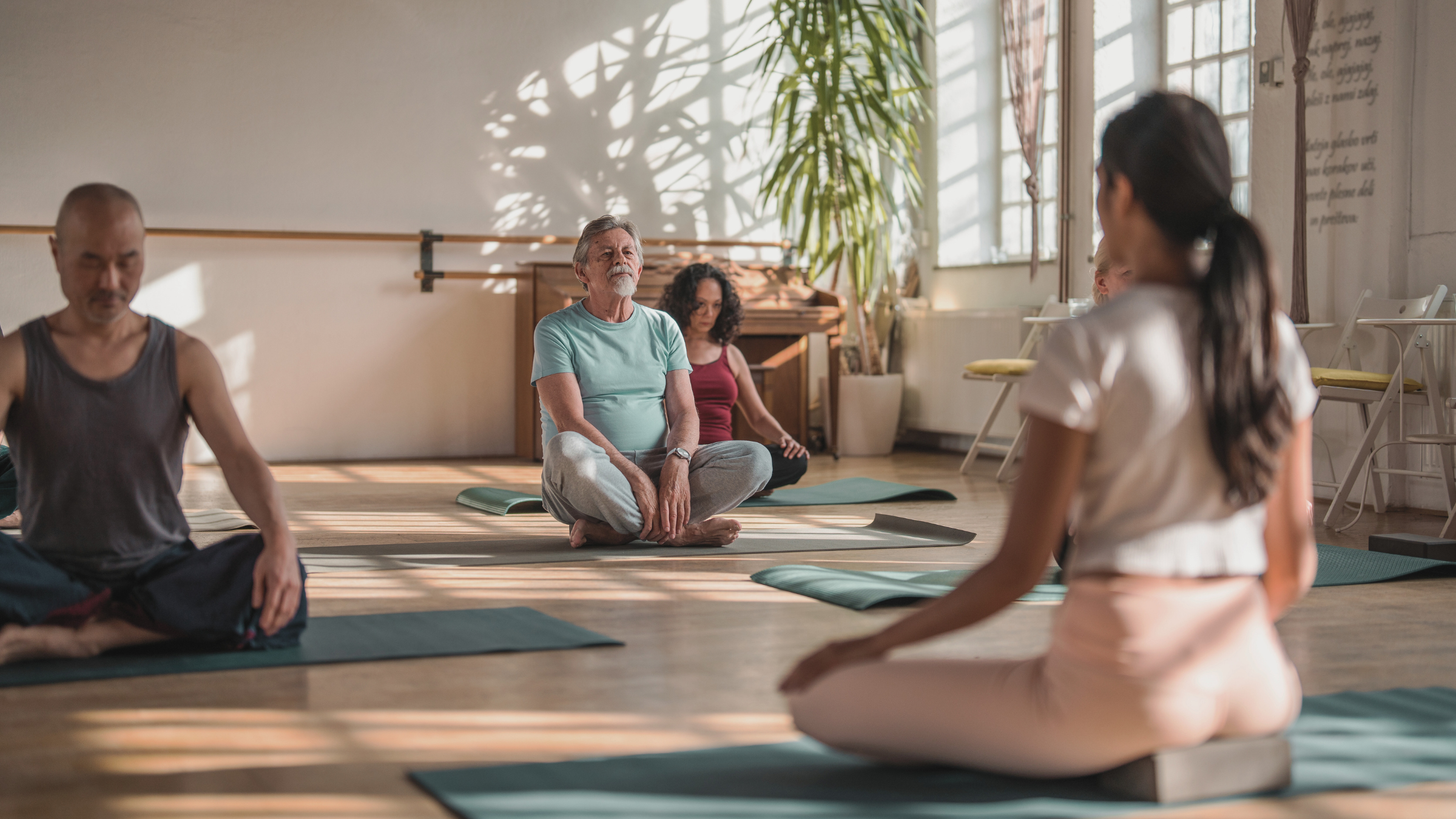So You Want to Take a Yoga Teacher Training? Here's What to Know About Each Type.

(Photo: Canva)
Ah, yoga teacher training. For some, it’s a bucket list item. For others, a path to a new career. But for many, it’s a full-on spiritual calling. Whatever propels you in the direction of a yoga teacher training (YTT) typically can’t be ignored.
It can also be more than a little overwhelming, no matter how much deep breathing you do—which is why we’re here to offer some insight.
Choosing a Yoga Teacher Training
Selecting the right YTT for you requires some inquiry of both yourself and the options available to you.
Trainings vary considerably from studio to studio, with some focusing on yoga lineage, others on service and leadership, and some a combination of the two. YTTs can be virtual or in-person, condensed into three months or spread out over six. The trainings also come with a fair amount of reading and homework. And yes, they tend to be quite pricey (though many studios offer scholarships and sliding scales).
It’s best to start by asking yourself what you’re looking to get out of the experience and how much time you have to dedicate.
Types of Yoga Teacher Trainings
The most common YTTs are broken down by an accumulation of hours: 200 hour, 300 hour, and 500 hour. A 200-hour training is a prerequisite for a 300-hour. Meanwhile, a 500-hour can be a standalone experience, but is often achieved by completing a 200- and 300-hour separately.
Here, an at-a-glance look at what you can expect (in broad strokes) at each level of YTT.
200-Hour
“So many students leave a 200 hour program saying, ‘I feel like I’ve barely scratched the surface of this topic!’ which is true,” says Jen Whinnen, founder of New York’s Three Sisters Yoga, which offers 200- and 300-hour trainings in addition to continued education. “A 200-hour grad should leave their training knowing they need to keep learning; a necessary and primary quality in any good teacher.”
What to expect:
- Foundational understanding of the practice and history
- Philosophy of yoga, including the chakras
- Anatomy basics
- Pranayama (breathwork) foundations
- How to teach poses
- Sequencing essentials
- Business basics
300-Hour
While a 200-hour teacher training offers a wealth of information, retaining those learnings sans immediate teaching (or simple repetition) is tough. As such, Whinnen believes a proper 300-hour YTT should include three prongs: revisiting what you’ve studied in the 200-hour, an expansion on those foundations, and personal or professional development (think internal reflection and business planning).
“We spend an enormous amount of time talking about how to meet people where they are, how to see people as they are, and respect them for who they are,” says Whinnen. “It sounds kind of obvious, but it’s actually not that easy. Our biases are constantly at odds with our observations.”
What to expect:
- Builds upon or a continuation of 200-hour
- Variations and modifications for poses
- Applied anatomy
- Applied understanding of ancient texts to life
- In-depth exploration of accessibility and special populations
- Can be specialized according to lineage, style of yoga, the population you intend to teach, and more
500-Hour
Completing a 500-hour—which can be pursued as one master training or by combining the aforementioned 200 and 300—should find you ready to teach. At this point, you will have acquired learned and practiced knowledge, along with a clear understanding around the many (many) nuances of guiding students through the practice.
What to expect:
- 200-hour + 300-hour = 500-hour
- Can be pursued as one YTT rather than taking the previous two separately
- Fully immersed in practice and philosophy
Certifications
As you research YTTs, you may come across mention of Yoga Alliance. A nonprofit founded in 1997, Yoga Alliance is currently the only regulatory body overseeing yoga teacher trainings in the U.S.
This means that yoga teacher trainings that are vetted by the Alliance award you with a certificate that is “Yoga Alliance accredited.” This is not necessary to teach.
The Seat of the Teacher
Whinnen has one piece of advice for all aspiring teachers: leave the ego at home. This advice will serve you as you move through a period of vulnerability, learning new skills, sharing, and getting real with your cohort. It will also ensure that you can truly show up for your future students. “Teachers are meant to be useful and of service, not the other way around,” says Whinnen.